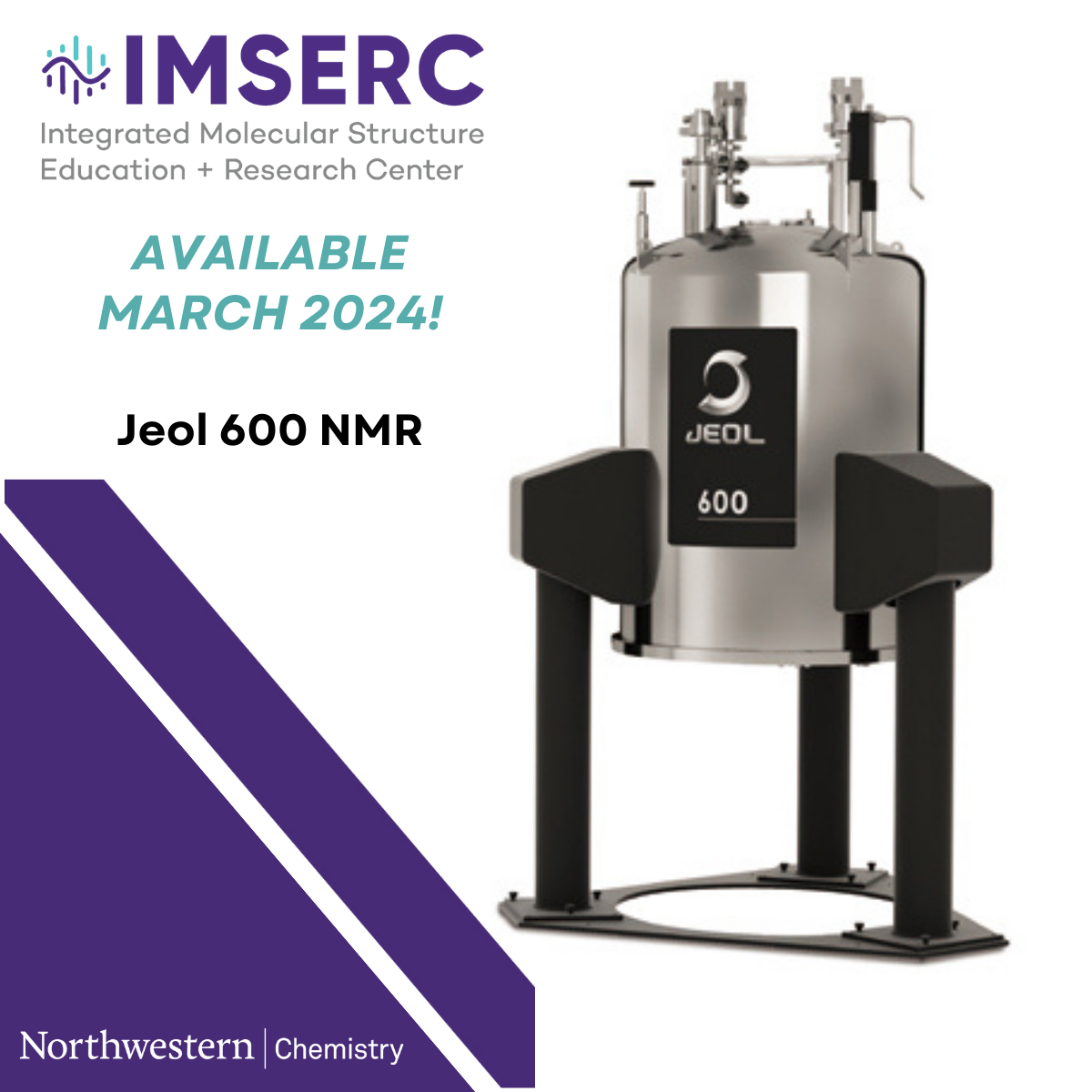Breaking boundaries in collaborative research (part 3): IMSERC upgraded capabilities coming in 2024
By Kelly Levander and Ben Owen
Northwestern University's Integrated Molecular Structure Education and Research Center (IMSERC), a core facility of Chemistry, is excited to announce some significant new services. As a result of Dr. Songi Han's arrival this fall, IMSERC had to reconfigure its space to accommodate the equipment brought by the Han Lab. The outstanding upgrades and additions have resulted in improved analytical access for NU Chemistry faculty and students.New to the Department’s core facility will be three electron paramagnetic resonance (EPR) spectrometers to be implemented into IMSERC’s typical open-access operations. These instruments will enable researchers to study the dynamics of materials, molecules and complexes with unpaired electrons across a variety of applications such as oxidation and reduction processes, biradicals and triplet state molecules, reaction kinetics, as well as numerous additional applications in structural biology, medicine and physics. IMSERC will be able to offer a wide range of experiments involving different frequencies, including pulsed Q-band, pulsed X-band and CW X-band.
A dynamic nuclear polarization (DNP) Nuclear Magnetic Resonance (NMR) spectrometer is another significant development. DNP NMR utilizes an electron polarizing agent and its large electron spin reservoir to transfer its polarization to surrounding nuclei of interest using microwave irradiation. This greatly boosts the NMR signal intensities by several orders of magnitude, overcoming the sensitivity limits of typical NMR experiments that rely solely on the naturally low magnetic moments of nuclei. IMSERC will now be able to provide researchers with the ability to delve deeper into molecular interactions and structural changes. In addition to having a profound impact on materials research, biomaterials research, and structural biology, this technique has long been desired by many of our faculty.
Additional upgrades are a nitrogen generating system to accommodate the updated equipment, ensuring a seamless and efficient workflow for all the equipment. Funding and acquisition are also under way for an electron diffractometer for micro/nano-sized single crystals (microED), which is a method utilizing electron diffraction intensities to perform full 3-dimensional crystallographic structure elucidation measurements, much like existing X-ray systems. This technique will vastly expand IMSERC’s crystal structure determination capability to even nanocrystals and at much faster acquisition times than current techniques. This instrument should arrive early Spring 2024.
To find a suitable space for all equipment additions, IMSERC needed to rearrange and modernize other equipment to create space. As a result, Northwestern Chemistry undergraduates will receive hands-on training and experience with new and upgraded, cutting-edge liquid chromatographs, gas chromatographs, and other sophisticated optical analytical tools (Raman, FT-IR, UV-VIS etc) starting this fall. These tools will enhance their education by providing valuable hands-on experience and will be additionally available to all IMSERC users and NU researchers. Additionally, a new wavelength-dispersive high throughput X-ray Fluorescence spectrometer was acquired that enables non-destructive elemental analysis of liquid and solid samples, as part of these facility changes.
In addition to equipment upgrades, the IMSERC staff will be expanded to include technical experts on both DNP NMR and EPR spectroscopy so that the equipment can be used most efficiently. A Research Associate Professor specializing in solid state NMR has been funded and hired, followed soon by an EPR specialist. These additional research staff will enable faculty and students to train quickly on the new instrumentation. IMSERC is distinguished from other institutions by its expert support staff. Combined with the collaborative environment, this effectively speeds up research and ensures a seamless flow of information.
IMSERC has simultaneously acquired the following new capabilities via grants and other collaborative efforts through to 2024: high-throughput thermogravimetric analysis (TGA and DSC) able to be coupled to FT-IR and GC-MS characterization techniques; ultra-high performance liquid chromatography systems coupled to quantitative (triple quad) and high-resolution accurate mass profiling (QTOF) mass spectrometers; materials and tissue label-free, molecular imaging via mass spectrometry.
By introducing all these advanced instruments and techniques, the Chemistry Department has solidified Northwestern University's reputation as a leader in scientific research and analytical capabilities. With IMSERC's capabilities, the Department can significantly contribute to chemistry advancement by providing access to cutting-edge instruments and removing roadblocks to results.
Visit the IMSERC website for more information on how to access these top-of-the-line facilities.


